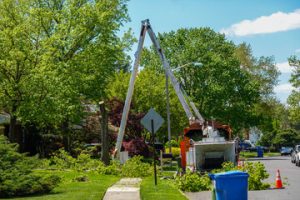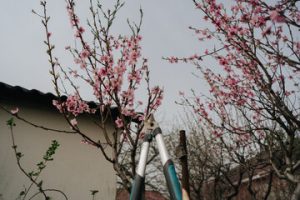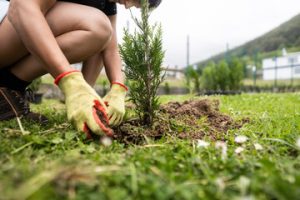Power Washing Services are an effective way to get rid of dirt, mildew, rust, pollutants and more. It also helps remove tripping hazards caused by loose paint, chewing gum, and other materials that are deeply embedded in surfaces.

A regularly scheduled power wash helps protect the siding, concrete floors and roof of your home or business from harmful substances that can cause damage if left untreated. It also improves curb appeal and enhances the overall safety of your property.
Power washing (also called pressure washing) uses heat and a strong stream of pressurized water to clean surfaces, including awnings, facades, walkways, patios, parking lots and more. It’s a great way to maintain and enhance curb appeal, while keeping surfaces healthy and safe. It also removes stubborn materials like mud, chewing gum, grime, pollutants and mold, which can cause long-term damage if left unattended. Regular cleaning can also prevent tripping and falling accidents..
For the best results, regularly clean your outdoor spaces with our professional Power Washing Services.
Health
Power washing, also known as pressure cleaning, is the use of high-pressure water spray to remove loose paint, dirt, mold, grime, dust, mud, chewing gum and more from objects and surfaces such as buildings, vehicles, concrete surfaces and outdoor furniture. It is more effective and thorough than traditional cleaning methods, which can leave scrubbing marks and scratches on surfaces.
Following a consistent power washing maintenance schedule helps protect your home from growth and debris that could damage siding, shingles, and concrete. Regular removal prevents these substances from accumulating and causing extensive damage over time, saving you money on costly repairs and replacement.
Algae, mildew and moss are more than just unsightly; they can be hazardous to health. These airborne pollutants can cause respiratory infections and other skin conditions, especially when exposed to prolonged periods of time. Professional power washers utilize special techniques and cleansers to safely and effectively eliminate these harmful substances from your property.
Sidewalks, facades and parking lots are high-traffic areas that accumulate a variety of debris and stains. Power washing these surfaces refreshes their appearance and helps prevent slip-and-fall accidents by removing oil stains and other slippery substances.
Annual power washing can also enhance your curb appeal by preventing black streaks on roofs and eliminating rust from metal exteriors. Power washing prepares surfaces for painting, ensuring a smoother and longer-lasting finish.
Safety
Power washing, also known as high-pressure water spraying, uses a highly pressurized hose to blast away grime, mold, loose paint, dirt, chewing gum, and other substances that can be difficult to remove with other cleaning methods. This method also helps prevent the growth of mildew, fungus and other harmful substances that can damage your home or commercial building exteriors.
Properly using a pressure washer requires safety precautions to avoid injury and property damage. The experts at APS carefully follow established safety protocols to ensure a safe and effective cleaning experience for their clients. Precautions include removing or relocating objects that could be swept away during the pressure washing process, announcing when the process will start, and utilizing appropriate water pressure settings for each surface type. Regular maintenance and proper storage of power washing equipment is also crucial to avoid clogging, deterioration, and potential malfunctions that could lead to injury or damage.
One of the biggest challenges that arises when performing power washing is avoiding vulnerable surfaces, such as windows and electrical outlets. Inadvertently directing the high-pressure water stream at these areas can result in shattered glass, damaged window frames, or even flooding and electrical issues. The professionals at APS carefully identify these sensitive areas and use lower pressure settings to minimize risk while still achieving excellent results.
After the washing process, it is essential to allow all cleaned surfaces to dry thoroughly. This is especially important for decks, patios, and walkways, which are prone to slip-and-fall accidents. The APS team is skilled in safely and quickly completing the drying process, leaving surfaces clean and free of slippery debris.
The APS team also adheres to best practices for wastewater disposal, protecting the environment and local waterways from harmful detergents and other residues that can degrade or harm the surrounding ecosystem. By adhering to these strict guidelines, APS is able to ensure that their cleaning processes are as environmentally responsible as they are effective.
Environment
Power washing is a great way to remove dirt, grime, mold, mildew, and other materials from a variety of surfaces on a property. These substances detract from a home’s aesthetic and can pose health risks for residents. In addition, they can cause permanent damage if left untreated. Keeping up with a regular power washing maintenance schedule can prevent these substances from damaging your siding, concrete, roof and other exterior elements of your property.
Power washers use high-pressure water jets to get rid of a wide range of contaminants from outdoor surfaces. This includes loose paint, rust, oil stains, dirt, chewing gum, algae, and other debris. These surfaces can be easily damaged by the strong force of the water spray, so it’s important to use a professional cleaner to make sure the job is done correctly. In addition, you should always wear protective gear when using a pressure washer, including safety goggles, closed-toe shoes, and gloves.
One of the biggest concerns surrounding residential power washing is its impact on the environment. As environmental awareness rises, homeowners are seeking eco-friendly alternatives that align with sustainability principles. This trend is influencing everything from the ingredients used in cleaning products to the type of equipment and washing techniques used in power washing services. In this blog post, we explore the multifaceted consequences of driveway power washing and how it can be environmentally friendly when performed properly.
There are many different ways to clean surfaces around your property, but power washing is the most effective for a variety of outdoor spaces. The high-pressure water stream is able to blast away stubborn dirt and other debris from a variety of surfaces, such as brick, stone, vinyl, and more. It is also less likely to damage fragile surfaces than traditional methods of cleaning, making it the ideal choice for many residential applications.
Choosing the right type of pressure washer for your needs is essential. Electric models are ideal for lighter jobs, while gas-powered options provide more power and mobility. You should also be aware of the temperature of your pressure washer’s water, as higher temperatures can damage some surfaces.




